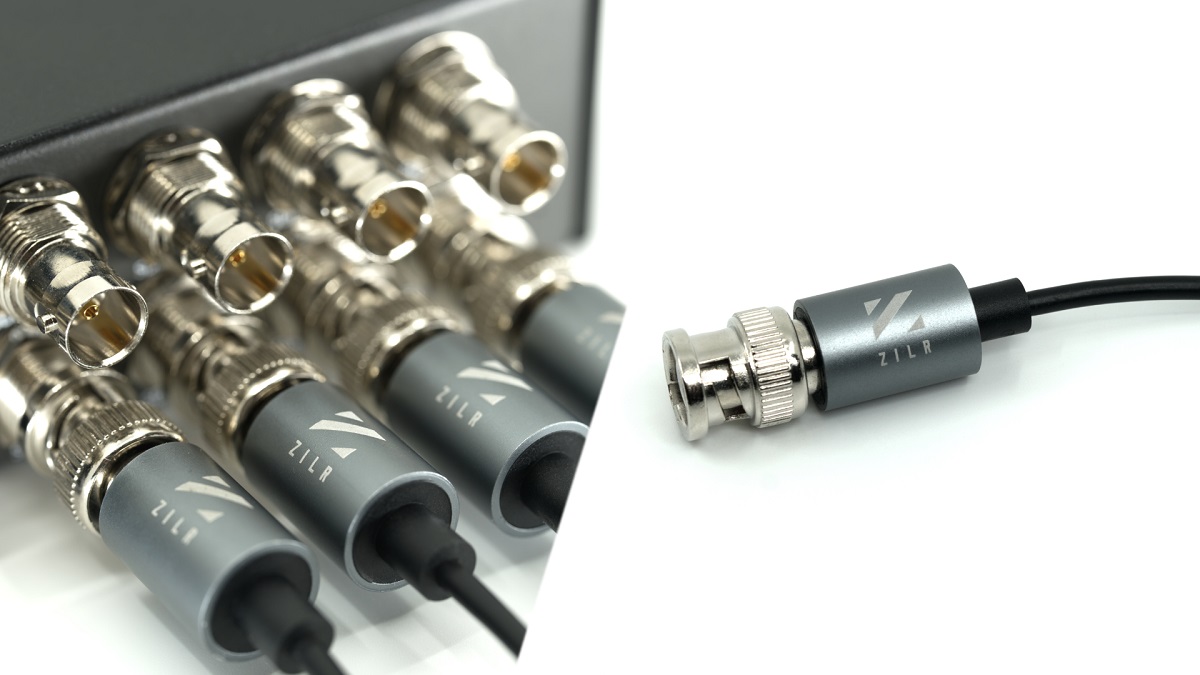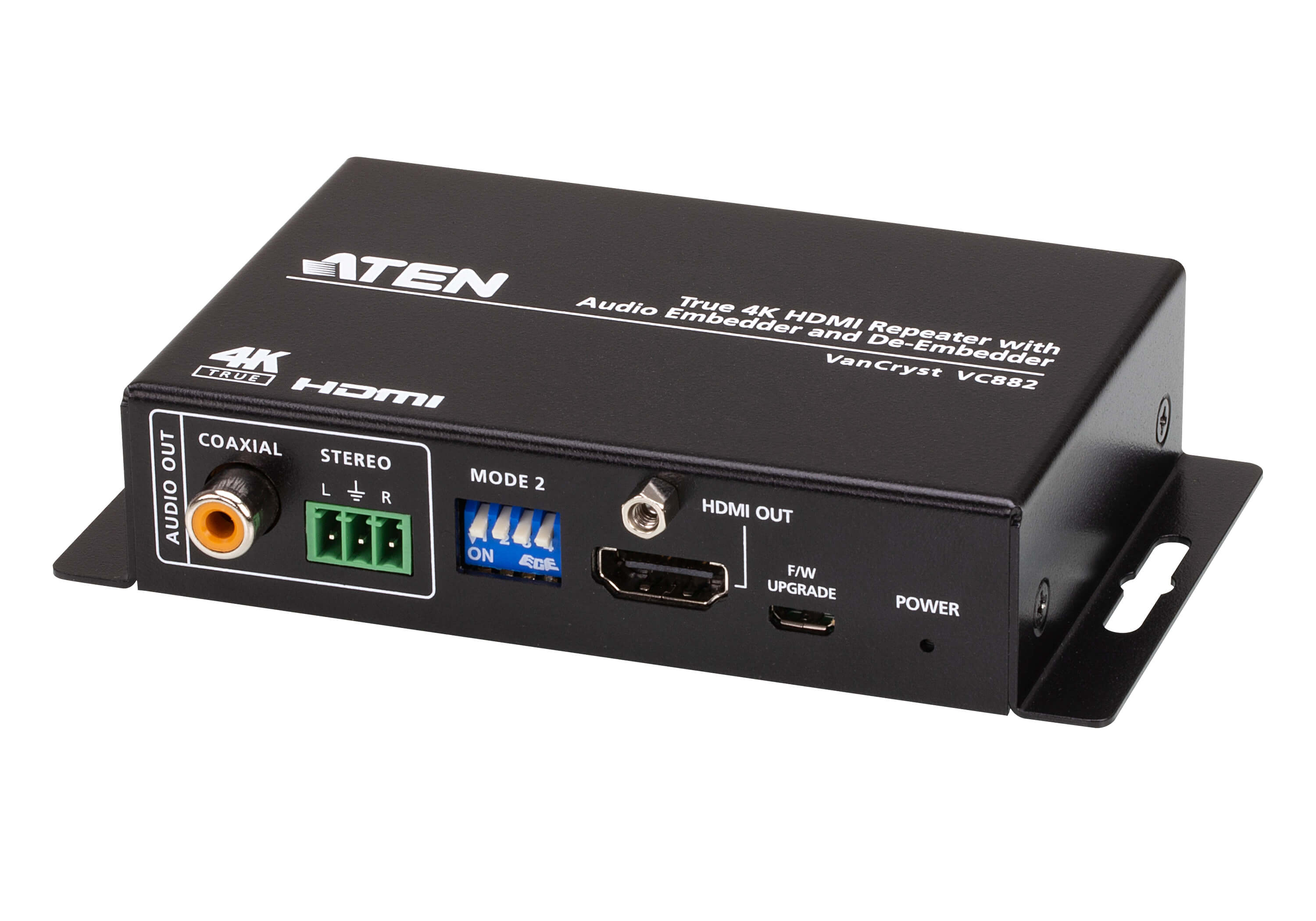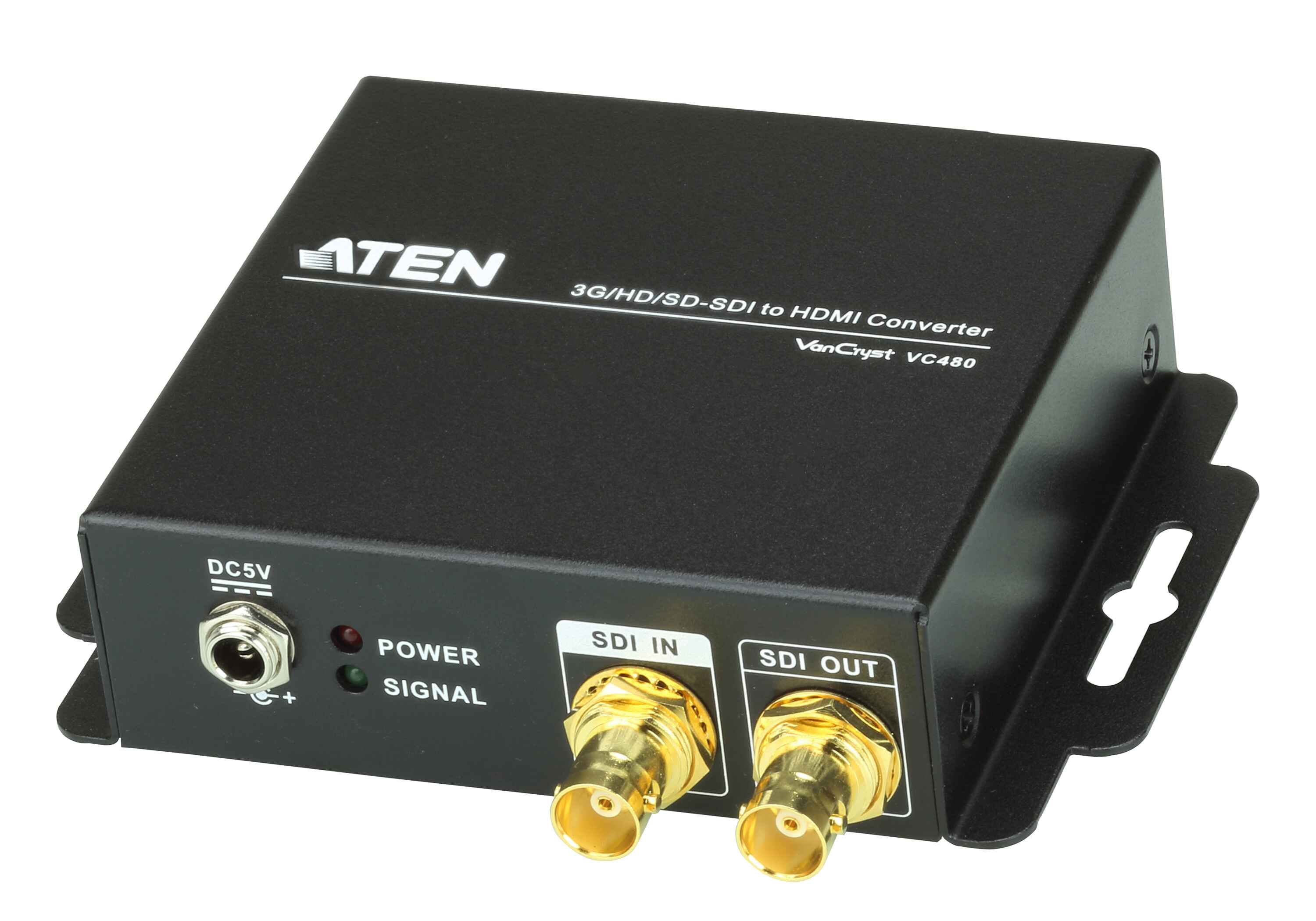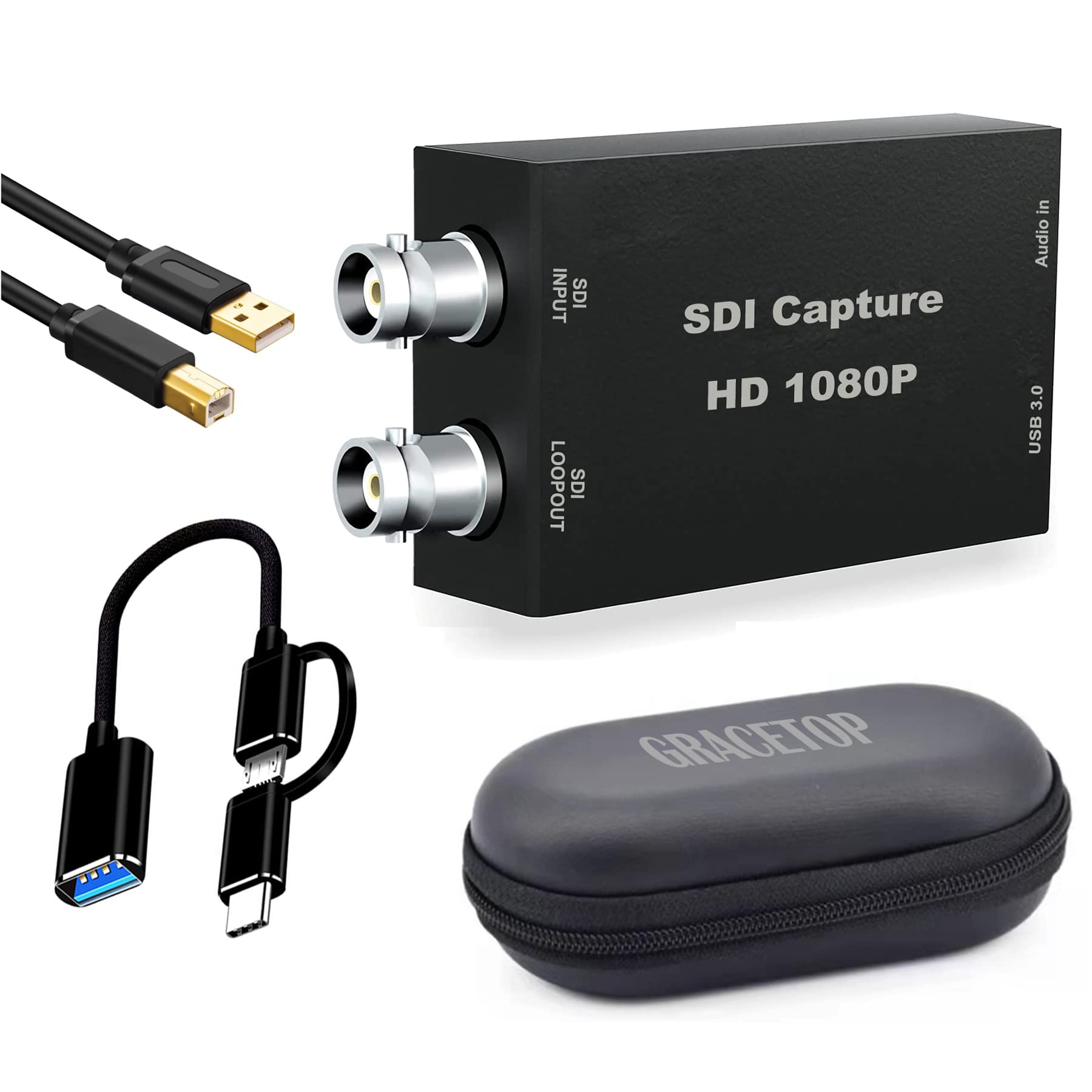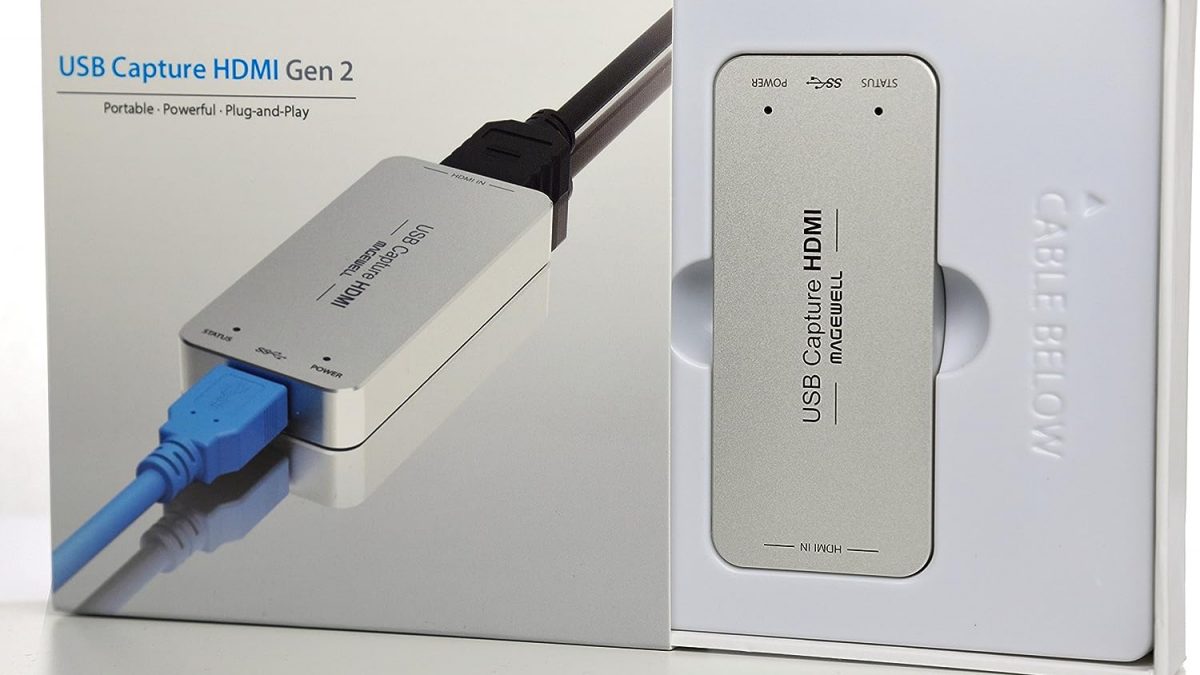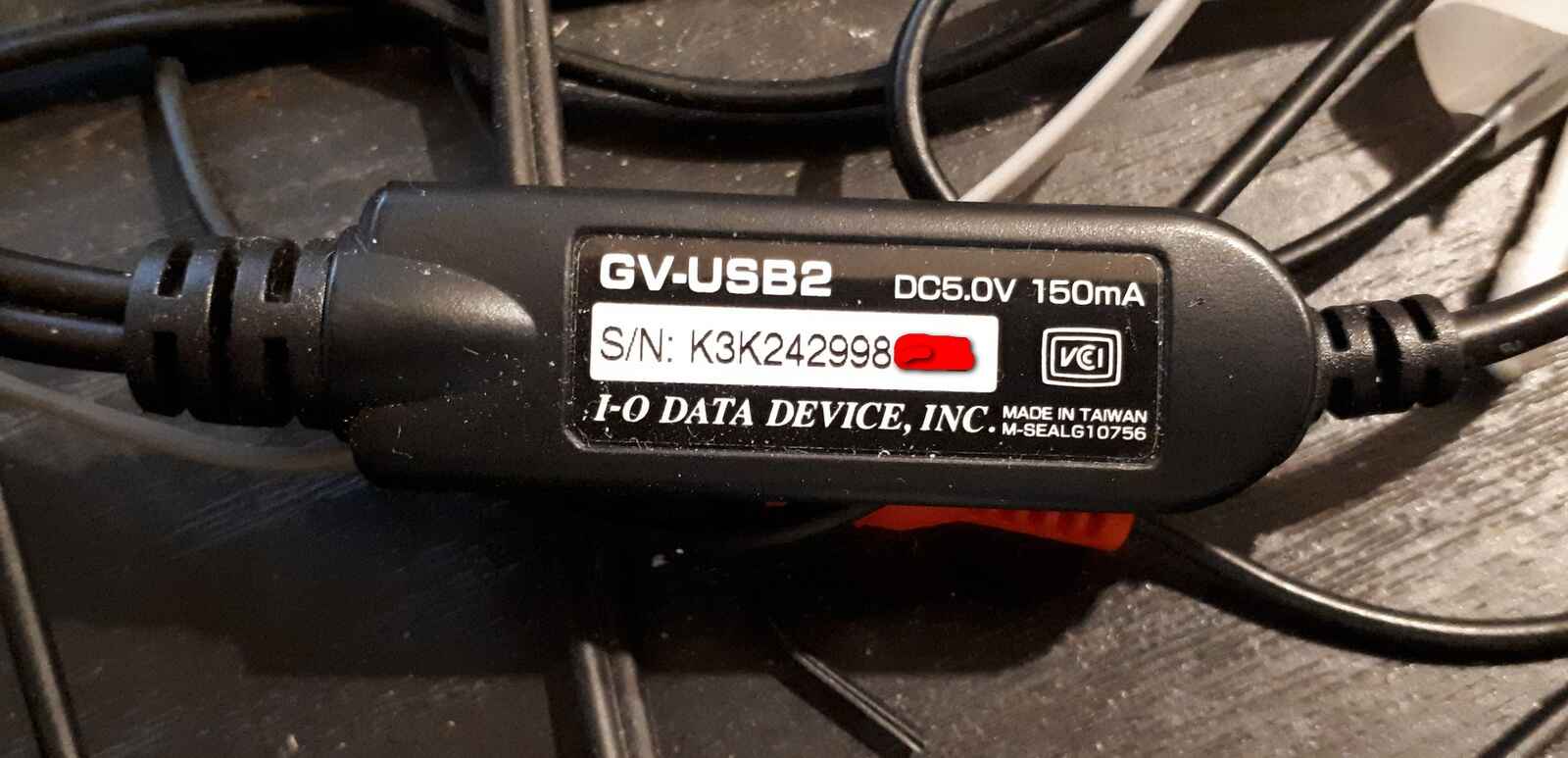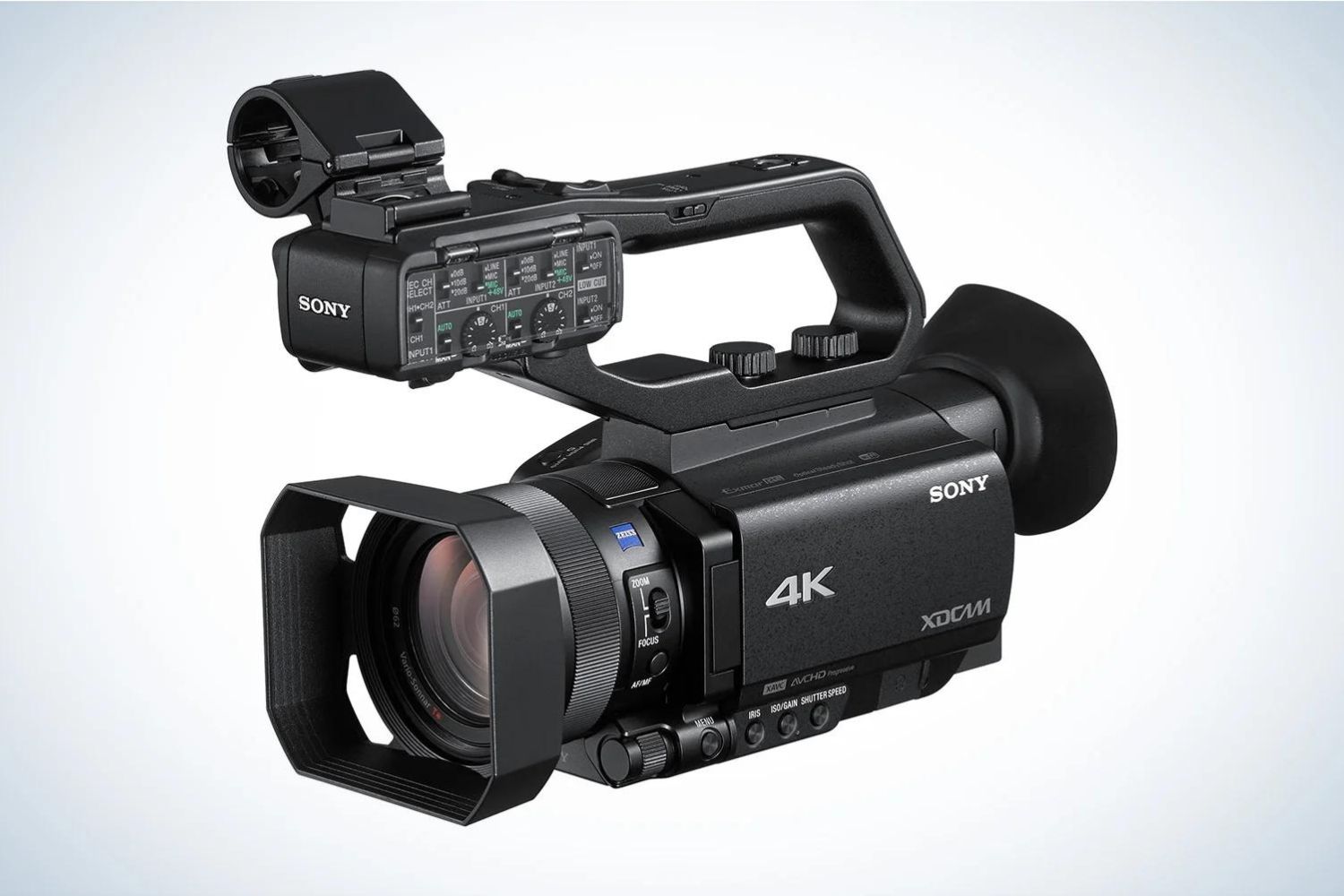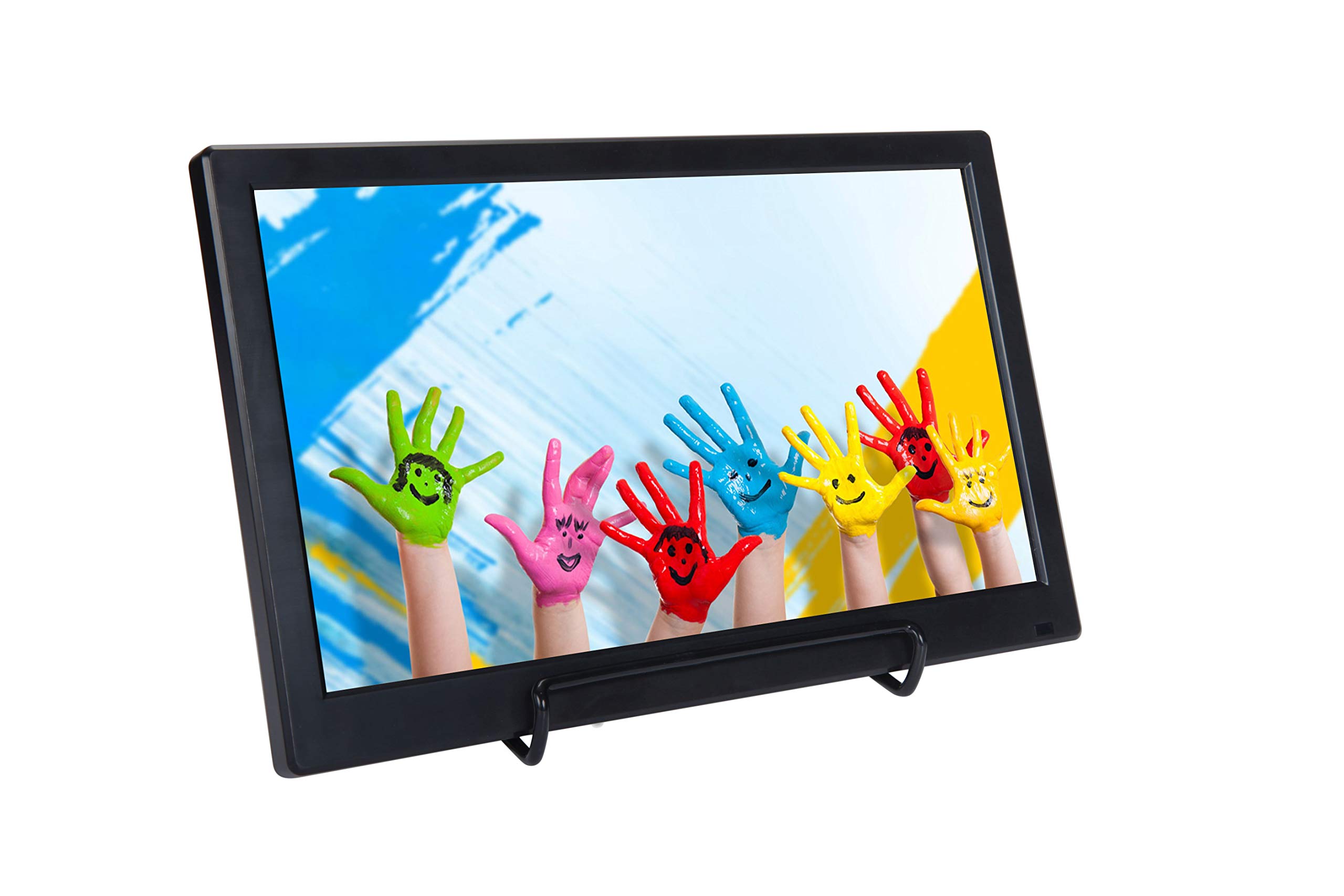Introduction
Welcome to the world of 3G SDI – a technology that has revolutionized the way we transmit and receive high definition video and audio signals. In this digital era, where high-quality visuals are in high demand, SDI (Serial Digital Interface) has emerged as the go-to solution for professionals in various industries.
But what exactly is SDI, and how does it relate to 3G SDI? In this article, we will delve into the basics of SDI and explore the capabilities and benefits of 3G SDI. Whether you’re an experienced video producer or just starting to explore the world of video production, this article will provide you with the knowledge you need to understand and harness the power of 3G SDI.
SDI stands for Serial Digital Interface, a standard that defines the way digital video and audio signals are transmitted over coaxial cables. It was initially developed for the broadcast industry, where reliable and high-quality signal transmission is critical. SDI technology preserves the video and audio integrity, ensuring that the final output is as close as possible to the original source.
3G SDI is an upgraded version of SDI that supports higher resolutions and frame rates. It is capable of transmitting 1080p video at 60 frames per second (fps) and even supports 4K resolutions at lower frame rates. The “3G” refers to the third-generation improvement of SDI technology, offering enhanced capabilities for professional video production.
With 3G SDI, professionals in industries like broadcasting, filmmaking, gaming, and live events can capture and transmit high-quality video and audio signals with minimal loss or degradation. It has become the standard interface for many high-end cameras, monitors, and other video production equipment.
In the following sections, we will dive deeper into the inner workings of 3G SDI, its benefits, applications, and limitations. So, let’s continue our journey into the world of 3G SDI and unlock the full potential of this groundbreaking technology.
What is SDI?
SDI, which stands for Serial Digital Interface, is a standard for transmitting digital video and audio signals over coaxial cables. It has become the backbone of professional video production and broadcasting due to its high quality, reliability, and wide industry acceptance.
SDI was developed as a solution to the limitations of analog video transmission. With analog signals, the quality deteriorates with each transmission, resulting in loss of detail and clarity. SDI, on the other hand, allows for the transmission of digital signals, ensuring that the video and audio quality remain pristine and unchanged from the original source.
The most common types of SDI interfaces are SD-SDI, HD-SDI, and 3G SDI. SD-SDI supports standard definition video resolutions, while HD-SDI is capable of transmitting high definition video signals at resolutions up to 1080i or 720p. 3G SDI is the latest iteration, offering even higher resolutions and frame rates, making it ideal for capturing and transmitting ultra-high-definition content.
One of the key advantages of SDI is its ability to carry both video and audio signals simultaneously over a single coaxial cable. This simplifies the overall setup and reduces cable clutter, making it a preferred choice for professional video production environments.
SDI also benefits from its long transmission distances. Unlike other digital interfaces like HDMI, which have a limited transmission range, SDI signals can travel long distances without loss of quality, making it ideal for large-scale productions and broadcasting applications.
In terms of connectivity, SDI cables use BNC (Bayonet Neill–Concelman) connectors, which are robust and secure. The locking mechanism ensures a secure connection and prevents accidental disconnections during operation, giving professionals peace of mind while working with critical video signals.
In summary, SDI is a standard that has revolutionized the way digital video and audio signals are transmitted over coaxial cables. It offers high-quality, reliable, and long-distance transmission, making it the preferred choice for professionals in various industries.
What is 3G SDI?
3G SDI, also known as 3G-SDI or Third Generation Serial Digital Interface, is an upgraded version of SDI that supports higher resolutions and frame rates. It is designed to meet the increasing demands of the video production industry for capturing and transmitting high-quality video and audio signals.
3G SDI is capable of transmitting 1080p video at 60 frames per second (fps), offering a level of clarity and smoothness that is essential for capturing fast-paced action and detailed images. Additionally, it can support 4K resolutions but at lower frame rates, making it a versatile choice for various production needs.
Compared to its predecessors, 3G SDI provides a substantial increase in bandwidth, allowing for the transmission of higher-resolution video signals. It achieves this by using a higher data rate, which ensures that the digital signals are carried accurately and without loss or degradation in quality.
One of the key features of 3G SDI is its backward compatibility with previous versions of SDI. This means that 3G SDI devices can be connected to and work with SD-SDI and HD-SDI equipment, providing flexibility and convenience for professionals who may have a mix of different generation devices in their workflow.
3G SDI interfaces use the same BNC connectors as other SDI versions, ensuring compatibility and easy integration with existing setups. The connections are secure and reliable, minimizing the risk of signal loss or interruptions during production.
The adoption of 3G SDI has been widespread in various industries, including broadcasting, live events, sports production, and filmmaking. Its ability to transmit high-quality video and audio signals with minimal latency and loss has made it an essential tool for professionals who demand nothing short of excellence in their work.
Overall, 3G SDI represents a significant advancement in SDI technology, offering improved resolution and frame rate capabilities for professionals in the video production industry. Its compatibility, reliability, and ability to handle high-definition content make it a favored choice for capturing and transmitting high-quality video and audio signals.
How does 3G SDI work?
3G SDI operates on the same basic principles as SDI, utilizing a digital signal to transmit video and audio data over coaxial cables. It is built upon the foundation of its predecessors, enhancing the capabilities to support higher resolutions and frame rates.
The key to the functionality of 3G SDI lies in the serial transmission of digital data. Instead of splitting the data into separate parallel streams, SDI transmits all the video and audio information in a single serialized data stream.
At the core of 3G SDI transmission is the use of a clock signal. This clock signal acts as a timing reference, ensuring that the data is transmitted at a consistent rate. The clock signal is embedded within the data stream, allowing the receiver to reconstruct the video and audio information accurately.
In the case of 3G SDI, the clock speed is increased to support the higher resolutions and frame rates. This higher clock speed enables the transmission of larger amounts of data, preserving the quality and integrity of the video and audio signals.
3G SDI also employs various encoding techniques to compress the data and maximize the available bandwidth. These encoding methods, such as the use of differential encoding and line coding, ensure efficient transmission without sacrificing quality.
Another important aspect of 3G SDI is its support for metadata. Metadata includes information about the video and audio signals, such as color space, aspect ratio, and audio format. This additional data is embedded within the digital stream, providing valuable information for downstream devices and ensuring accurate representation of the content.
When it comes to the physical connection, 3G SDI utilizes BNC connectors. BNC connectors are widely used in the video production industry due to their robustness, secure locking mechanism, and ability to provide reliable signal transmission over long distances.
In summary, 3G SDI works by serially transmitting digital video and audio data over coaxial cables. It utilizes a clock signal and encoding techniques to ensure accurate and efficient data transmission. The support for metadata and the use of BNC connectors further contribute to the reliability and versatility of 3G SDI technology.
Benefits of 3G SDI
3G SDI offers a range of benefits that make it a preferred choice for professionals in the video production industry. Let’s explore some of the advantages that 3G SDI brings to the table:
High-Quality Signal Transmission: 3G SDI is designed to transmit video and audio signals with minimal loss or degradation in quality. It ensures that the final output is as close as possible to the original source, preserving the integrity of the content.
Support for High Resolutions and Frame Rates: With the ability to handle 1080p video at 60 frames per second (fps) and even higher resolutions, 3G SDI enables professionals to capture and transmit crisp, detailed images with smooth motion, making it ideal for sports events, live broadcasts, and other fast-paced productions.
Long Transmission Distances: 3G SDI signals can travel long distances without significant loss of quality, thanks to its robust transmission capabilities. This makes it suitable for large-scale production environments where cameras, switchers, and displays may be located far apart.
Compatibility and Flexibility: 3G SDI devices are backward compatible with previous versions of SDI. This means that existing SD-SDI and HD-SDI equipment can still be utilized alongside 3G SDI devices, providing flexibility and convenience for professionals who have a diverse range of equipment in their setup.
Robust and Reliable Connection: 3G SDI uses BNC connectors, which are known for their durability and secure locking mechanism. These connectors ensure a stable connection and minimize the risk of accidental disconnections during production, delivering a reliable and uninterrupted workflow.
Widely Accepted Industry Standard: 3G SDI has gained widespread acceptance and is widely used in the professional video production and broadcasting industries. Its popularity ensures compatibility and interoperability between different devices and systems, allowing for seamless integration and collaboration among professionals.
Cost-Effective Solution: 3G SDI offers a cost-effective solution for capturing and transmitting high-quality video and audio. The availability of affordable 3G SDI equipment, cables, and accessories makes it attainable for professionals and organizations with various budget considerations.
In summary, 3G SDI provides high-quality, reliable signal transmission, support for high resolutions and frame rates, compatibility with existing SDI equipment, and a cost-effective solution for professional video production. These benefits make 3G SDI a preferred choice for professionals who demand superior image and sound quality in their productions.
Applications of 3G SDI
3G SDI has found widespread applications across various industries that rely on high-quality video and audio transmission. Let’s explore some of the key areas where 3G SDI is commonly used:
Broadcasting: 3G SDI is a staple in the broadcasting industry. It is used for transmitting live events, news broadcasts, and studio productions. The high-quality signal transmission and support for high resolutions make it essential for delivering clear and detailed visuals to viewers around the world.
Live Events: Whether it’s a sports event, concert, or conference, 3G SDI is commonly used to capture and transmit live video feeds. The ability to handle high resolutions and fast frame rates ensures that every detail is captured accurately, creating an immersive experience for the audience.
Filmmaking and Cinematography: 3G SDI has become a standard interface in the film industry. It is used for connecting cameras, monitors, and other equipment on set, allowing filmmakers to capture high-quality footage with minimal latency and maximum control over the image and sound.
Gaming and E-Sports: In the world of gaming and e-sports, 3G SDI provides a reliable and high-quality solution for capturing and streaming gameplay footage. The ability to handle fast motion and high resolutions ensures that every crucial moment of the game is captured with precision and clarity.
Medical Imaging: 3G SDI is used in medical imaging applications, such as endoscopy and surgical procedures. It allows for the transmission of high-resolution video feeds from medical devices to monitors or recording systems, enabling doctors and medical professionals to make accurate diagnoses and perform precise procedures.
Education and Training: 3G SDI is utilized in educational settings for capturing and streaming lectures, presentations, and demonstrations. It ensures that students receive clear and detailed video and audio content, enhancing their learning experience.
Video Production Studios: 3G SDI is commonly used in professional video production studios for connecting cameras, switchers, monitors, and other equipment. Its high-quality signal transmission and compatibility with existing SDI infrastructure make it an essential technology for producing films, TV shows, commercials, and other video content.
Security and Surveillance: 3G SDI is employed in security and surveillance systems to transmit high-resolution video from surveillance cameras to monitoring stations. The ability to handle higher resolutions and frame rates ensures that critical details are captured and transmitted without loss or degradation.
In summary, 3G SDI finds applications in broadcasting, live events, filmmaking, gaming, medical imaging, education, video production studios, and security systems. Its high-quality signal transmission, compatibility, and ability to handle high resolutions make it an indispensable technology in various industries that rely on accurate and reliable video and audio transmission.
Limitations of 3G SDI
While 3G SDI offers numerous benefits for professional video production, it is important to be aware of its limitations. Let’s explore some of the key limitations of 3G SDI:
Bandwidth Limitations: Despite its ability to handle higher resolutions and frame rates compared to its predecessors, 3G SDI still has limitations in terms of bandwidth. It may not be able to support the highest resolution and frame rate combinations demanded by certain applications, such as cutting-edge 4K at high frame rates.
Distance Limitations: Although 3G SDI is known for its long transmission distances, the actual distance achievable may be affected by various factors such as cable quality, signal degradation, and equipment compatibility. In some cases, the transmission distance may need to be limited or signal amplifiers or repeaters may need to be used to extend the reach.
Compatibility with Consumer Devices: While 3G SDI is widely used in professional video production, it may not be as common in consumer devices such as televisions and consumer-grade cameras. This can limit the connectivity options for professionals who need to integrate their 3G SDI equipment with consumer-grade devices.
Cost of Equipment: The cost of 3G SDI equipment, including cameras, monitors, and other devices, can be higher compared to consumer-grade options. This may pose a challenge for professionals or organizations with budget limitations, particularly those who are just starting in the industry.
Complexity of Setup: Setting up a 3G SDI workflow can be more complex compared to simpler consumer-grade solutions. Professionals may require additional knowledge and expertise to properly configure and integrate the various components, such as routers, switchers, and converters, to ensure smooth operation and compatibility.
Limited Audio Channel Support: While 3G SDI can transmit high-quality video, it has limitations when it comes to audio channel support. It typically supports a limited number of audio channels, which may be a consideration for productions that require complex multi-channel audio setups.
Despite these limitations, 3G SDI remains a powerful and widely used technology in professional video production. It continues to evolve to overcome these limitations and address the increasing demands of the industry, ensuring that professionals have access to high-quality video and audio transmission solutions.
Conclusion
3G SDI is a powerful and versatile technology that has greatly impacted the world of video production and broadcasting. With its ability to transmit high-quality video and audio signals, support for higher resolutions and frame rates, and long-distance transmission capabilities, it has become the go-to choice for professionals in various industries.
We explored the basics of SDI and what sets 3G SDI apart from its predecessors. The upgraded version offers improved capabilities and performance, making it well-suited for capturing fast-paced action, producing high-quality visuals, and delivering immersive viewing experiences. Its backward compatibility and use of BNC connectors provide flexibility and ease of integration with existing SDI setups.
We discussed the benefits of 3G SDI, including high-quality signal transmission, support for high resolutions and frame rates, long transmission distances, robust connectivity, and cost-effectiveness. These advantages have made 3G SDI an indispensable tool for professionals in broadcasting, filmmaking, live events, gaming, medical imaging, education, and more.
However, it’s important to recognize the limitations of 3G SDI, such as bandwidth limitations, distance limitations, compatibility challenges with consumer devices, higher equipment costs, setup complexity, and limited audio channel support. By understanding these limitations, professionals can make informed decisions when incorporating 3G SDI into their workflows and explore alternative solutions for specific requirements.
In conclusion, 3G SDI has revolutionized the way video and audio signals are transmitted in the professional video production industry. Its high-quality performance, flexibility, and compatibility have made it a vital technology for capturing and transmitting high-definition content. As technology continues to evolve, we can expect further advancements in SDI technology, pushing the boundaries of video and audio transmission and paving the way for even more exciting possibilities in the future.









